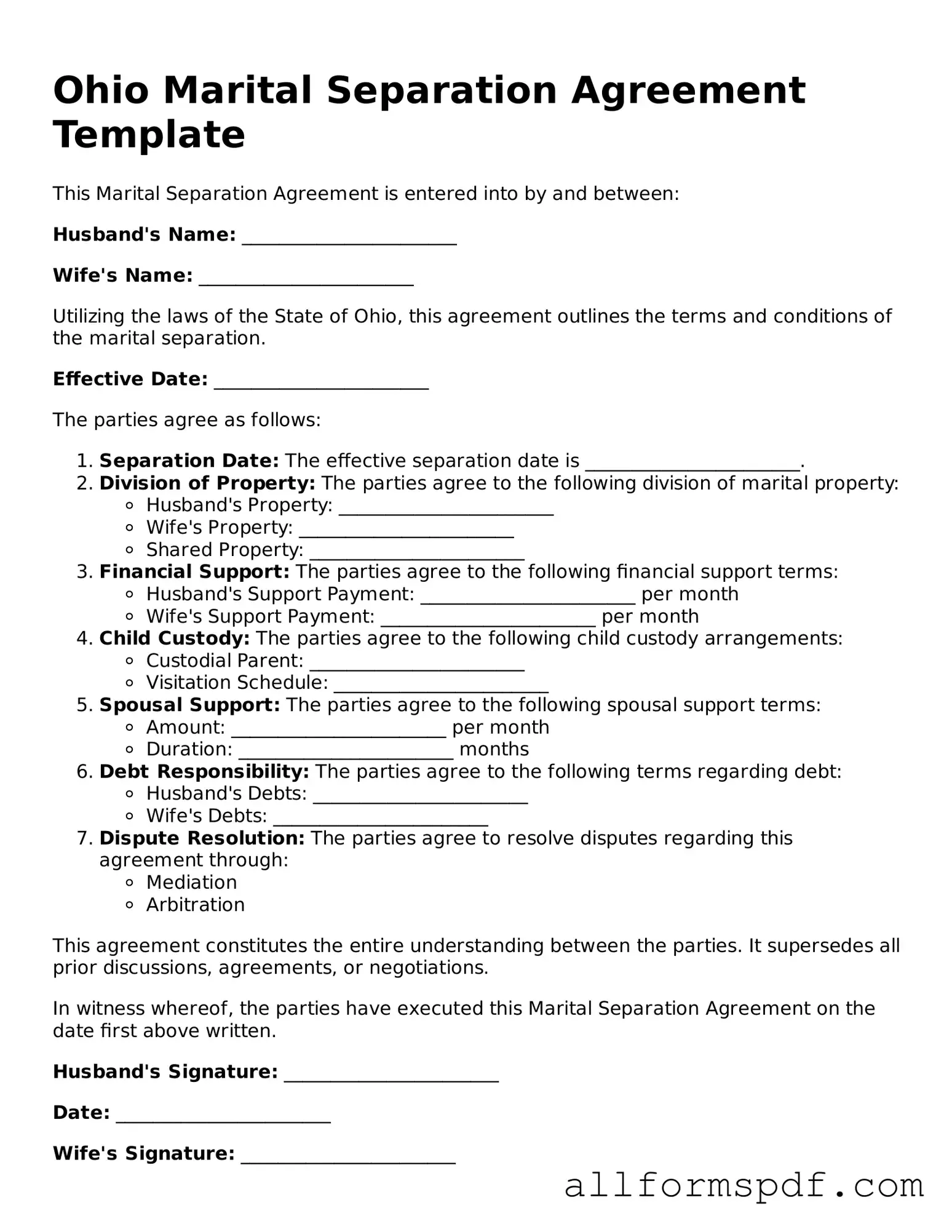Fillable Marital Separation Agreement Form for Ohio
A Marital Separation Agreement in Ohio is a legal document that outlines the terms and conditions agreed upon by spouses who wish to live separately while remaining legally married. This agreement typically addresses issues such as property division, child custody, and support obligations. Understanding this form is crucial for couples navigating the complexities of separation without pursuing divorce immediately.
Create My Marital Separation Agreement Now
